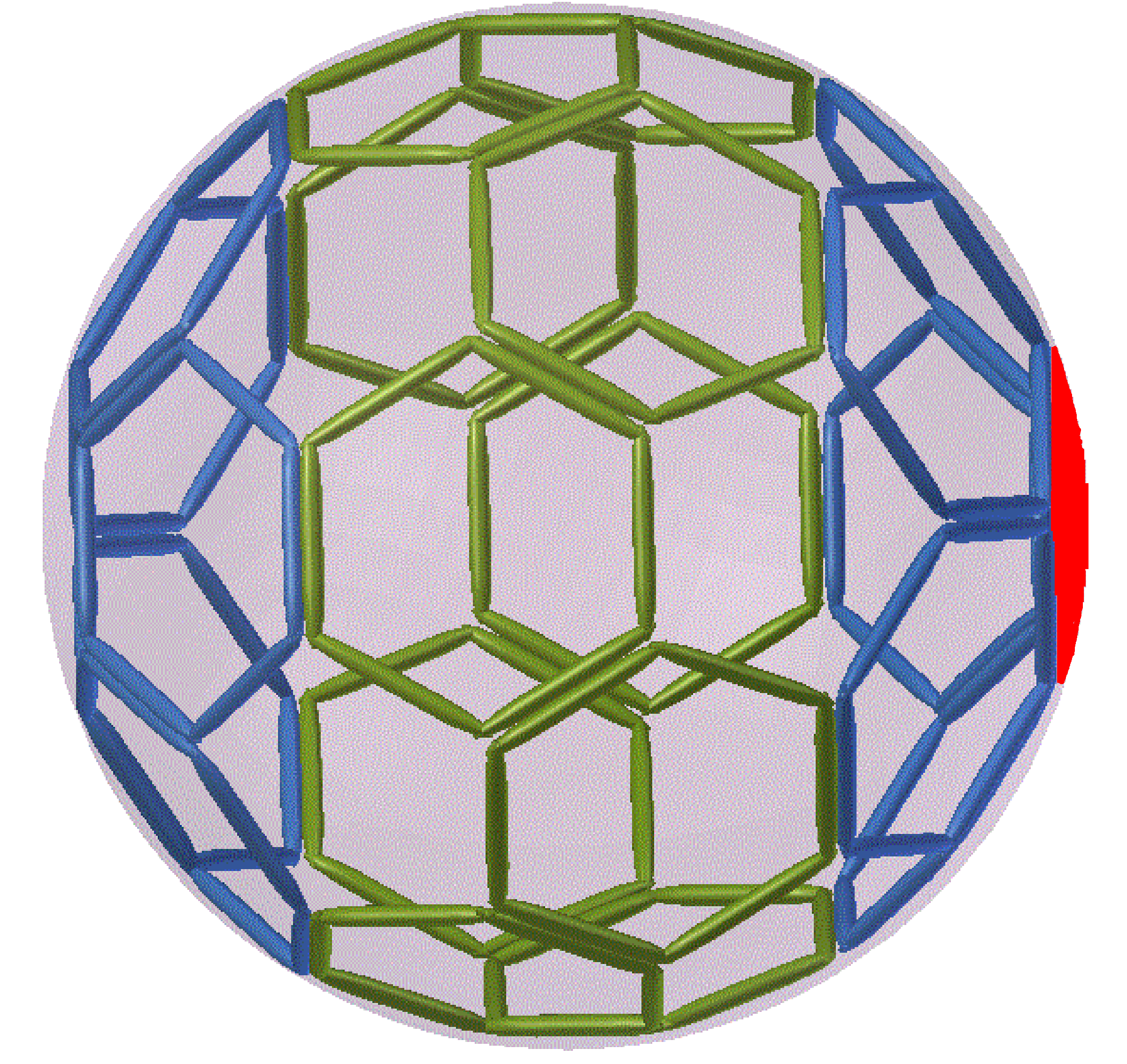What, then, can we say about this bubble in space that we call a proton? For one thing we know it is mostly hollow. When a proton disintegrates in a collision with another particle, the only things that emerge are three quarks having together only 0.5% of the energy of the proton. Where does the other 99.5% of the formation energy of the proton go? The New Physics says it goes into creating the bubble in space, cocking the Strong Force spring.
There are two kinds of quarks in a proton: there is one “down” quark and two “up” quarks. With two up quarks and one down quark forming the interior of a proton, nothing else inside, and space pressing in with considerable force, it is reasonable to hypothesize that the quarks form a bracing structure that keeps the bubble in space from collapsing.
This is a crazy idea. No one ever considered what quarks might look like before, never mind that they might have a bracing function. But the results are so astoundingly good we should probably suspend our disbelief for one further moment, and acknowledge that if this much were an accurate model of reality, then either space must have something like surface tension, or there must be a thin skin around the particle holding space out, like the material of a balloon. Otherwise space would collapse inward around the quark structure. Of these two models, we favor the surface tension idea, only because it is simpler.
What else should factor into our consideration of this bracing structure?
- The proton lives essentially forever so this bracing structure must be highly stable.
- The quarks are probably small relative to the size of the proton, since they take only 0.5% of the energy to make them.
- As mentioned, a proton has two up quarks and one down quark.
- The down quark is probably about twice a big as the up quark, because it takes about twice as much energy to create it.
We considered several possible bracing structures, starting with using cubes for down quarks and tetrahedrons for up quarks. This didn’t work because when two particle fuse, we would think the two bracing structures inside them would touch. This means the mass lost (the Mass Defect or Binding Energy) is the spherical cap between the outside of the sphere and the bracing structure inside. Using squares and tetrahedrons, this cap was too large to match the data.
What did seem to work was assuming the bracing structure for the proton was a “buckyball”, basically a soccer ball shape:

You can see on the right and left sides there is a cap between the outside of the bubble and the bracing structure which gets cut off if this particle butted up against another; this cap is shown on the right in red. We know exactly how much energy it takes to make this spherical cap because we can calculate the volume of this spherical cap, and we know how much energy it took to make the whole proton’s volume.
In keeping with the creation energy of a down quark being twice that of a up quark, the down quark has two times the number of quark segments (straight bars) as the up quark.
Here is a more familiar image:

I can hear you at the soccer field now: “Nice spin on that truncated icosahedron!” Notice there are two shapes here: a pentagon and a hexagon. This gives two sizes of spherical caps: a pentagonal cap and a slightly larger hexagonal cap. That’s all we need to understand fusion.
Well, except we need neutrons….